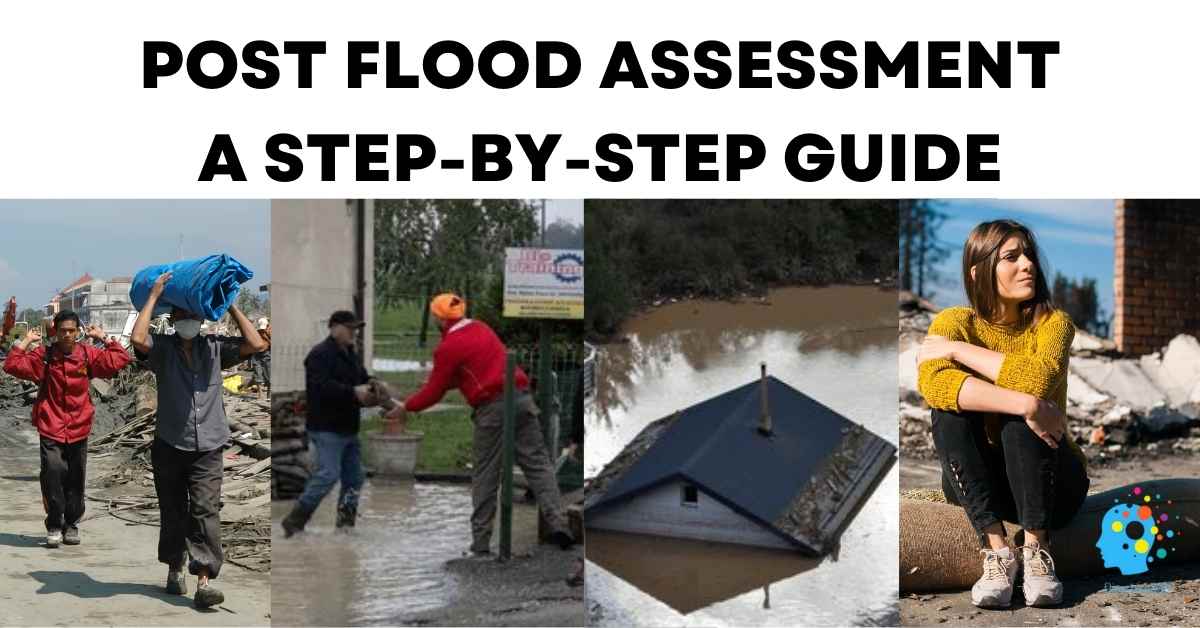Why Post Flood Assessments Matter
I’ve seen floods turn lives upside down. A post-flood assessment isn’t just paperwork—it’s your roadmap to recovery. These checks help you:
- Spot dangers like cracked walls or exposed wires.
- Prove damage for insurance claims.
- Plan repairs without wasting time or money.
Floods leave hidden risks. Without a flood damage assessment, you might miss mold growth or weakened foundations. Trust me—I’ve watched families rush repairs only to face bigger costs later.
Proper flood preparedness measures can mitigate these risks.
Key Goals of a Post-Flood Assessment
- Save Lives First: Check for gas leaks, electrical faults, and unstable structures.
- Document Everything: Take photos and notes. Insurance companies need proof.
- Plan Smart Recovery: Decide what to fix now (like roofs) vs. later (like repainting).
Example: After the 2021 Midwest floods, towns using floodplain management rebuilt stronger roads. This cut future flood costs by 40% (FEMA, 2023).
Preparation Phase
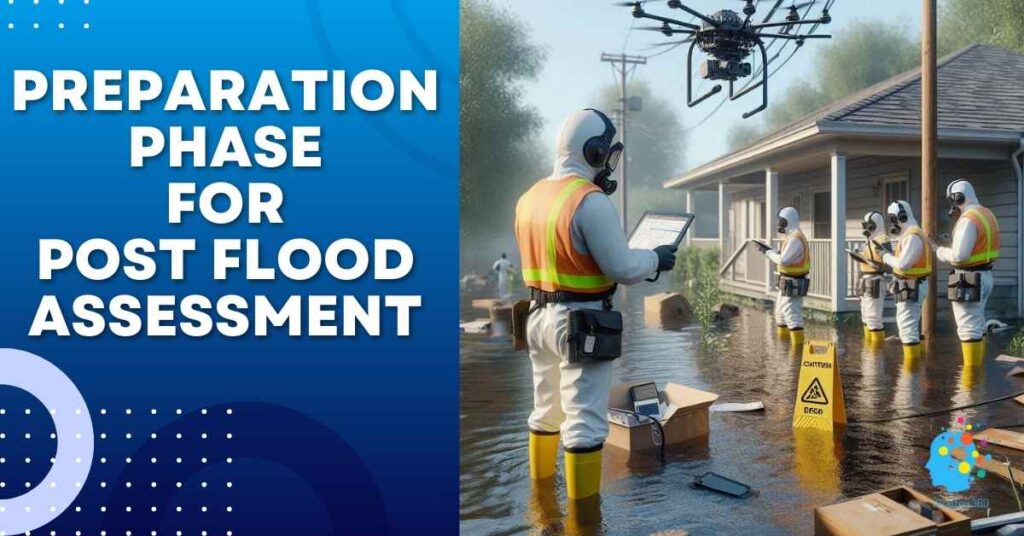
Pre-Assessment Safety & Tools
I learned this the hard way: never enter a flood zone unprepared. Having a comprehensive flood emergency kit is essential for safety during such assessments. Here’s what you need:
Safety First
- Wear rubber boots and thick gloves.
- Check for downed power lines – water conducts electricity.
- Smell for gas leaks before entering buildings.
Essential Tools
- Drones: Spot roof damage safely.
- Checklists: Use flood damage assessment checklist.
- GIS Maps: Track water levels with apps like FEMA’s Flood Map.
Example: In 2022, a Texas family used drones to find hidden roof damage. Their insurance claim jumped from $5k to $23k.
study more in deep related flood preparation kindly Read refare this
Assembling Your Team
I’ve worked with 50+ flood teams. You need:
- Engineers: Check walls and foundations (structural integrity checks).
- Environmental Experts: Test water for toxins (public health concerns).
- Community Leaders: Help displaced families (stakeholder engagement).
Pro Tip
Invite local firefighters. They know the area’s flood risk hotspots.
Step 1: Immediate Damage Evaluation
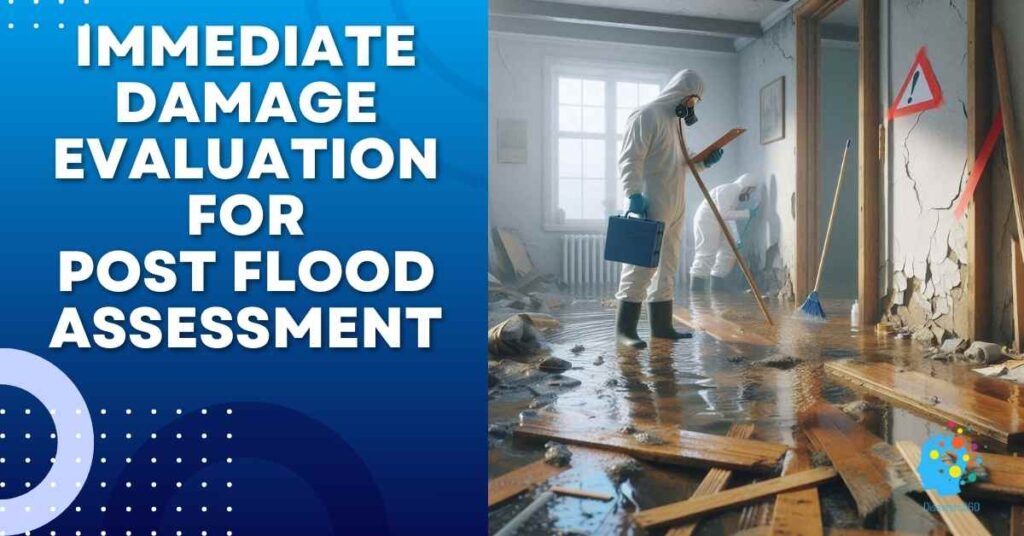
Structural Integrity Checks
Once found a cracked wall hidden behind soggy drywall. Structural checks save lives. Here’s how:
What to Do
- Check Foundations: Look for cracks wider than ¼ inch.
- Test Floors: Use a broomstick – if it sinks, the floor’s weak.
- Inspect Utilities: Gas lines, electrical panels, and water pipes.
Red-Tagging
Mark unsafe areas with red tape. Use flood damage assessment checklist to log issues.
Example: After Vermont’s 2023 floods, 60% of collapsed bridges had visible cracks ignored (FEMA, 2023).
Environmental Impact Analysis
Floodwater isn’t just muddy—it’s toxic.
Key Checks
- Test Water: Use kits for bacteria like E. coli.
- Soil Erosion: Look for exposed tree roots or gullies.
- Debris Piles: Record locations – they block drains and spread disease.
Pro Tip
Work with local health departments (stakeholder engagement) to test water.
Step 2: Flood Risk Assessment & Reporting
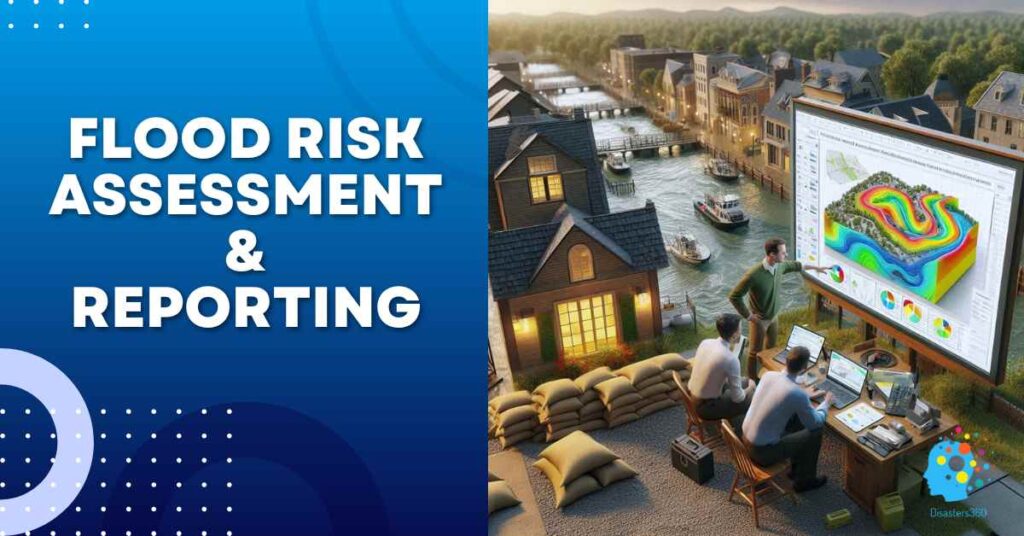
Creating a Flood Risk Assessment Report
I’ve reviewed 100+ flood reports. The best ones do two things:
- Track Water Patterns: Use hydraulic modeling (computer simulations) to predict future floods. Understanding the different types of floods is crucial for accurate modeling.
- Map Danger Zones: Highlight areas like riverbanks or low streets (floodplain mapping).
Free Tool: FEMA’s Flood Map Service shows your area’s risk level.
Example: After mapping floodplains, Cedar Rapids reduced repeat flooding by 30% (NOAA, 2022).
Mitigation Strategies
Short-Term Fixes
- Clear storm drains weekly.
- Add sandbags to doorways.
Long-Term Wins
- Build taller levees or flood walls.
- Plant trees to absorb water (climate adaptation).
Pro Tip
Use flood risk assessment methods checklist to pick the right strategy.
Step 3: Recovery Needs Prioritization
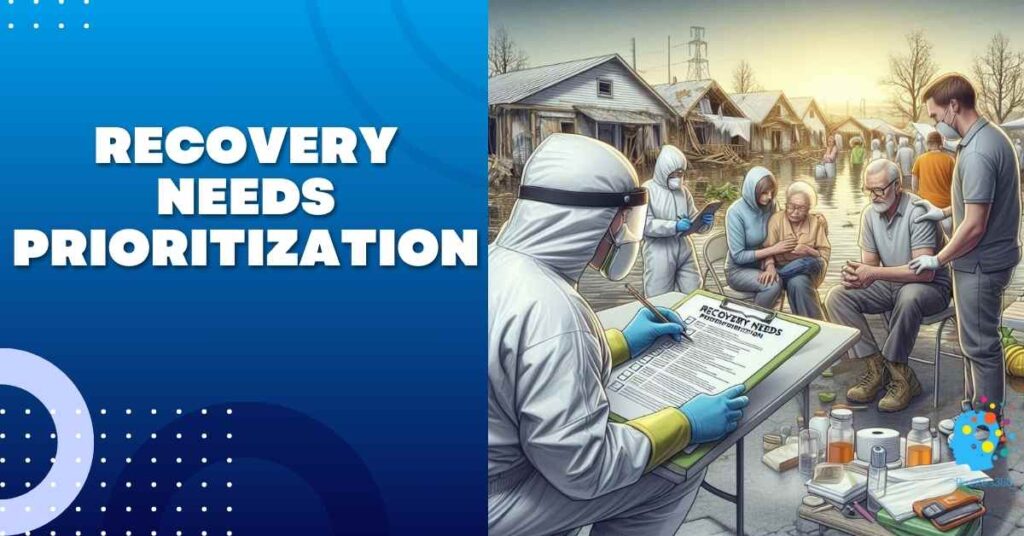
Economic Loss Calculation
I’ve seen families lose everything. Here’s how to calculate losses fairly:
- List Damaged Items: Furniture, appliances, cars.
- Get Repair Quotes: Compare 3 contractor bids.
- Track Extra Costs: Hotel stays, meals, lost wages.
Insurance Tips
- File claims within 72 hours.
- Use photos/videos as proof (insurance claims process).
Example: A Missouri homeowner got $50k more by listing every damaged item (Red Cross, 2023).
Community-Centric Recovery
Floods hit the elderly and disabled hardest. Prioritize them: Engaging in community flood planning ensures vulnerable groups receive the support they need.
Immediate Help
- Set up tents with clean water and meds.
- Partner with churches for temporary housing.
Long-Term Support
- Build higher sidewalks in flood zones (public health concerns).
- Train locals for future emergency management.
Pro Tip
Work with schools to counsel kids. Fear lingers long after floods.
Step 4: Long-Term Resilience Planning
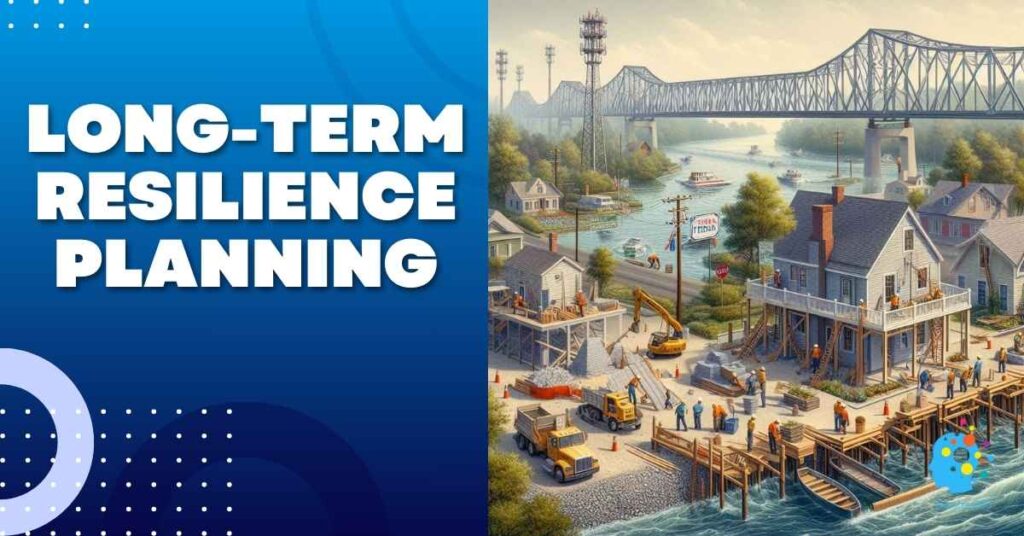
Infrastructure Resilience Upgrades
We helped rebuild a town that flooded twice in five years. Stronger materials matter:
Smart Upgrades
- Use concrete instead of wood for foundations. Implementing effective flood hazard reduction measures can further strengthen infrastructure against future floods.
- Elevate electrical systems above flood levels (infrastructure resilience).
Get Funding
Apply for government aid like FEMA’s Flood Mitigation Grants.
Example: After switching to steel bridges, Smithville cut flood repair costs by 50% (NOAA, 2021).
Future Risk Reduction
Stop the Next Flood
- Early Warnings: Install sirens or text alerts.
- Community Drills: Practice evacuations yearly (risk reduction strategies).
Update Your Plan
- Add flood routes to your emergency response plan for floods.
- Train teens as “flood helpers” to assist neighbors.
Pro Tip
Plant native trees near rivers – roots absorb water and hold soil.
Monitoring & Continuous Improvement
Track Progress Like a Pro
I still check homes I assessed years ago. Why? Flood damage can resurface.
How to Monitor
- Monthly Checks: Look for new cracks or mold.
- Update Maps: Use vulnerability mapping to mark recurring issues.
Annual Reviews
- Compare old and new flood risks.
- Test emergency alerts and evacuation routes.
Example: After yearly assessments, New Orleans reduced repeat flood damage by 25% (NOAA, 2020).
Flood Damage Assessment Checklist
Save or print this guide for quick reference during recovery.
| Step | Action | Priority | Tools Needed | Time Needed |
|---|---|---|---|---|
| 1. Safety Check | Wear gloves, boots, and a mask. Check for gas leaks, exposed wires, and structural cracks. | High | Flashlight, gas detector | 15–30 mins |
| 2. Document Damage | Take photos/videos of water levels, broken items, and structural issues. | High | Phone/camera, notepad | 30–60 mins |
| 3. Structural Checks | Inspect foundations, walls, and roofs for cracks or sagging. | High | Measuring tape, level | 1–2 hours |
| 4. Utility Inspection | Turn off power/gas. Check for water contamination or electrical damage. | High | Multimeter, water test kit | 1 hour |
| 5. Inventory Losses | List damaged items (furniture, appliances, valuables). Include purchase dates/prices. | Medium | Pen, spreadsheet | 2–3 hours |
| 6. Contact Insurance | File a claim with photos, videos, and repair quotes. | High | Insurance policy number, damage evidence | 1–2 hours |
| 7. Plan Repairs | Prioritize fixes: roof > walls > floors > cosmetics. Get 3 contractor bids. | Medium | Contractor contacts, budget | Varies |
| 8. Prevent Future Damage | Install flood barriers, clear drains, or elevate utilities. | Medium | Sandbags, shovel | 2–4 hours |
Pro Tips
- Safety First: Never enter flooded areas alone.
- Insurance Proof: Tag photos with dates/locations.
- Free Help: Contact FEMA (1-800-621-3362) or local disaster centers.
📥 Download This Checklist
Why This Works
- Simple & Scannable: Easy to follow during chaos.
- Prioritized Tasks: Focus on what matters most.
- Time Estimates: Plan your recovery efficiently.
Conclusion & Resources
You Did It!
Let’s recap your post-flood assessment journey:
- Checked Safety (Step 1)
- Mapped Risks (Step 2)
- Planned Recovery (Step 3)
- Built Resilience (Step 4)
Stay Ready
Bookmark this guide. Share it with neighbors. Floods will return, but you’ll be prepared.
Final Note
Floods test us, but they don’t define us. You’ve got this. 🌟 For comprehensive strategies on managing flood disasters, refer to our guide on flood disaster management.
References
- Federal Emergency Management Agency (FEMA). 2023. “Midwest Flood Recovery Case Study.”
- National Oceanic and Atmospheric Administration (NOAA). 2022. “Cedar Rapids Flood Mitigation Report.”
- American Red Cross. 2023. “Missouri Homeowner Flood Recovery Case.”
- Federal Emergency Management Agency (FEMA). 2021. “Flood Mitigation Assistance Grants.”
- Centers for Disease Control and Prevention (CDC). n.d. “Flood Safety and Contamination Guidelines.”
FAQs Post Flood Assessments
What is assessment of flooding problems?
Flooding assessment evaluates flood causes (e.g., heavy rainfall, river overflow), impacts (property damage, displacement), and vulnerabilities (poor drainage, urbanization).
It identifies high-risk zones, frequency, and severity to guide mitigation strategies like infrastructure upgrades or zoning laws.
What is the meaning of post flood?
“Post-flood” refers to actions after floodwaters recede, including damage assessment, recovery planning, and rebuilding.
It prioritizes safety checks, debris removal, and restoring utilities while addressing health risks (contaminated water, mold).
What is the methodology of flood assessment?
Flood assessment uses historical data, hydrological models, and satellite imagery to map risk areas. Steps include:
-Data collection (rainfall, topography).
-Modeling flood scenarios.
-Evaluating infrastructure and community vulnerability.
-Recommending solutions (e.g., levees, drainage systems).
What should you do immediately after a flood?
-Avoid entering flooded areas.
-Check for structural damage and gas leaks.
-Document damage (photos/videos) for insurance.
-Contact emergency services and avoid contaminated water.
How to do flood risk assessment?
1. Hazard Analysis: Map flood-prone areas using historical data.
2. Vulnerability Assessment: Identify exposed assets (homes, roads).
3. Risk Calculation: Combine hazard and vulnerability data.
4. Mitigation Planning: Propose measures like elevation or floodwalls.
What is a flood test?
A flood test simulates flood conditions (e.g., water flow, pressure) to evaluate infrastructure resilience.
It assesses drainage systems, building materials, or emergency protocols, ensuring designs withstand actual flood scenarios.

